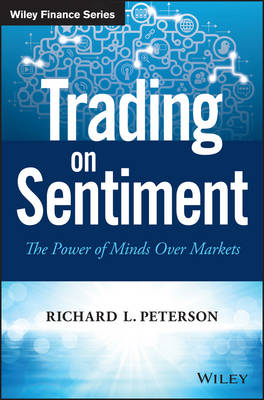Wiley Finance
2 total works
Why is it that the investing performance of so many smart people reliably and predictably falls short? The answer is not that they know too little about the markets. In fact, they know too little about themselves.
Combining the latest findings from the academic fields of behavioral finance and experimental psychology with the down-and-dirty real-world wisdom of successful investors, Drs. Richard Peterson and Frank Murtha guide both new and experienced investors through the psychological learning process necessary to achieve their financial goals.
In an easy and entertaining style that masks the book’s scientific rigor, the authors make complex scientific insights readily understandable and actionable, shattering a number of investing myths along the way. You will gain understanding of your true investing motivations, learn to avoid the unseen forces that subvert your performance, and build your investor identity - the foundation for long-lasting investing success.
Replete with humorous games, insightful self-assessments, entertaining exercises, and concrete planning tools, this book goes beyond mere education. MarketPsych: How to Manage Fear and Build Your Investor Identity functions as a psychological outfitter for your unique investing journey, providing the tools, training and equipment to help you navigate the right paths, stay on them, and see your journey through to success.
In his debut book on trading psychology, Inside the Investor’s Brain, Richard Peterson demonstrated how managing emotions helps top investors outperform. Now, in Trading on Sentiment, he takes you inside the science of crowd psychology and demonstrates that not only do price patterns exist, but the most predictable ones are rooted in our shared human nature.
Peterson’s team developed text analysis engines to mine data - topics, beliefs, and emotions - from social media. Based on that data, they put together a market-neutral social media-based hedge fund that beat the S&P 500 by more than twenty-four percent—through the 2008 financial crisis. In this groundbreaking guide, he shows you how they did it and why it worked. Applying algorithms to social media data opened up an unprecedented world of insight into the elusive patterns of investor sentiment driving repeating market moves. Inside, you gain a privileged look at the media content that moves investors, along with time-tested techniques to make the smart moves—even when it doesn’t feel right. This book digs underneath technicals and fundamentals to explain the primary mover of market prices - the global information flow and how investors react to it. It provides the expert guidance you need to develop a competitive edge, manage risk, and overcome our sometimes-flawed human nature. Learn how traders are using sentiment analysis and statistical tools to extract value from media data in order to:
- Foresee important price moves using an understanding of how investors process news.
- Make more profitable investment decisions by identifying when prices are trending, when trends are turning, and when sharp market moves are likely to reverse.
- Use media sentiment to improve value and momentum investing returns.
- Avoid the pitfalls of unique price patterns found in commodities, currencies, and during speculative bubbles
Trading on Sentiment deepens your understanding of markets and supplies you with the tools and techniques to beat global markets— whether they’re going up, down, or sideways.

